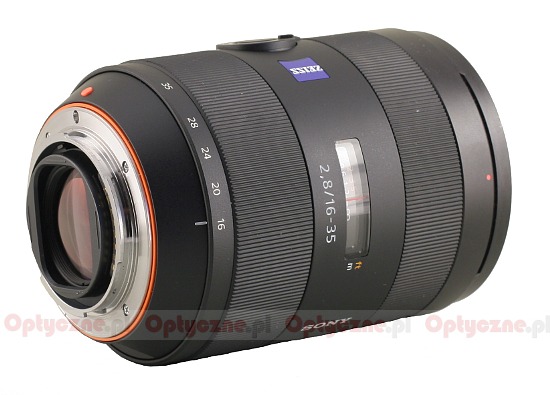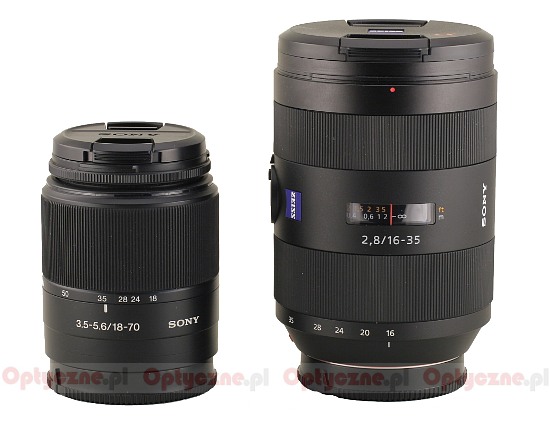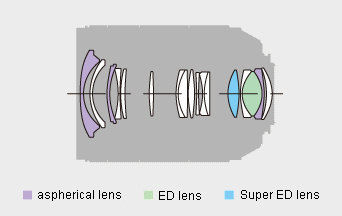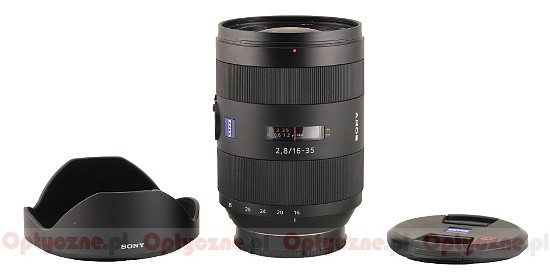Sony Carl Zeiss Vario Sonnar 16-35 mm f/2.8 T* SSM
3. Build quality
 |
After the ring there is a distance scale window, with markings in both feet and meters; below, we see the lens’s parameters and the Zeiss and Sony logo, positioned on both sides. Under the Zeiss logo there is also a round autofocus mode switch (AF/MF).
Please Support UsIf you enjoy our reviews and articles, and you want us to continue our work please, support our website by donating through PayPal. The funds are going to be used for paying our editorial team, renting servers, and equipping our testing studio; only that way we will be able to continue providing you interesting content for free. |
- - - - - - - - - - - - - - - - - - - - - - - - - - - - - - - - - - - - - - - - - - - - - - - -
Moving on, we meet a manual focus ring, which is a bit narrower but also quite wide and comfortable. Of course, we must add here that neither the changes of focal lengths nor zooming will change the lens’s dimensions (the optical elements move only inside the barrel) and the 77 mm filter thread doesn’t rotate. Because of that the lens is airtight – it won’t have serious dust problems and it will cooperate with different kinds of filters seamlessly.
 |
How the new Zeiss compares with its competitors? This chart presents a Zeiss, a Canon 16-35 mm and two Nikkors: a 17-35 and a 14-24 mm, f/2.8 side by side. As you see, in this class no lens changes its physical dimensions with focal lengths change; also the minimum focus is the same for all of them but here the similarities end. The biggest front element we find in Nikkor 14-24 mm – what’s more, it is so protruding that we won’t be able to use any filters with it. The Canon’s front element is also significantly large so we will have to use filters as big as 82 mm.
The Zeiss 16-35 mm is also relatively heavy. Weighing 900 grams, it is noticeably heavier than the Canon 16-35 mm and the Nikkor 17-35 mm - it almost matches the weight of the big Nikkor 14-24 mm. This significant weight is undoubtedly due to the most complex optical construction – the Zeiss lens consists of as much as 17 elements in 13 groups. Two elements are made of the low-dispersion ED glass, three elements are aspherical. Inside the lens we can also find a circular aperture diaphragm with nine blades which can be closed to f/22.

The buyer gets two caps, a petal-type lens hood and a case.
 |






